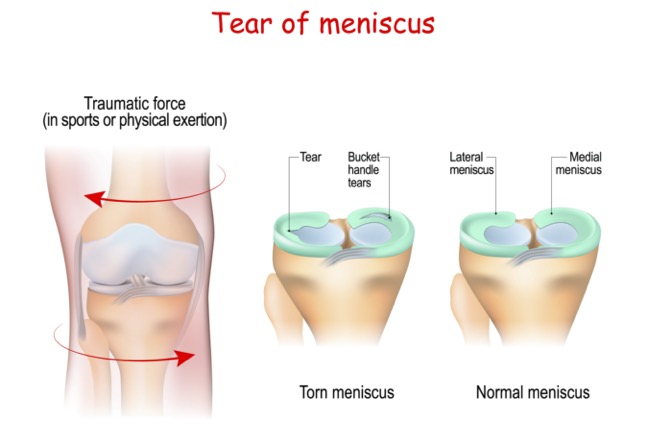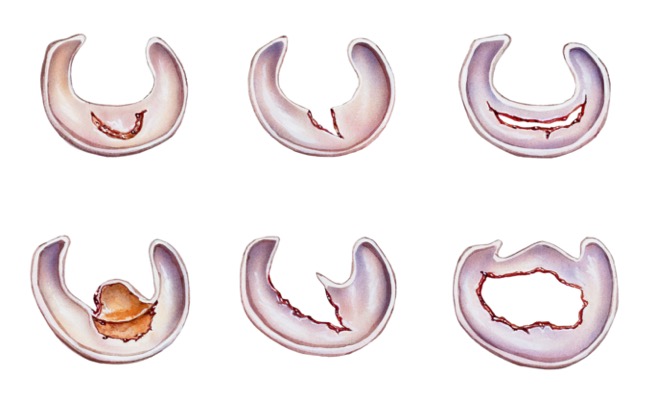 The meniscus or cartilage is often referred to as the “shock absorber” in the knee. There are two structures, medial and lateral, that are semilunar in shape. In addition to their cushioning effect, they help stabilize the knee.
The meniscus or cartilage is often referred to as the “shock absorber” in the knee. There are two structures, medial and lateral, that are semilunar in shape. In addition to their cushioning effect, they help stabilize the knee.
How does this injury happen?
Many patients will report hearing a “pop” and experience swelling in the knee joint, with the swelling not necessarily happening immediately at the time of injury. Sometimes this happens due to chronic stress or pounding, without a single, well-defined episode of injury.
How will we know this is your problem?
The diagnosis of a meniscus tear is made based on your history of injury and physical examination. The knee is thoroughly examined, with the physician often feeling a popping or clicking in the joint with movement. In some cases, a piece of cartilage may cause the joint to essentially lock up. Radiographs and MRI also assist the physician in confirming the diagnosis and ruling out other conditions.
Common Types of Tears

How can this be treated?
Initially the goal is to decrease the swelling and pain in the knee and restore a normal range of motion. Physical therapy can achieve these goals, plus strengthening the muscles around the knee helps stabilize it. If you are not able to return to your prior level of activity with non-operative treatment and you wish to return to that level, then surgery may be needed. There are many options to be discussed with your surgeon to choose the best treatment for you. For example, depending on the type of tear and its location, the surgeon may suggest repairing the cartilage, removing the torn piece, or removing the entire cartilage. Most of the time, this is arthroscopic surgery.
